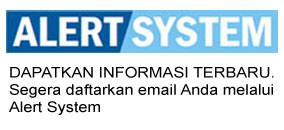
Seattle Children’s Hospital installed an enterprise data warehouse in June using IBM’s PureData system
Until June of this year, the Seattle Children’s Hospital was storing all of its data on 31 SQL servers, which were progressively breaking down. Even with the large number of servers, the hospital had not been able to keep up with the increasing data demands. Everything they developed took resources, and the eight-person IT team was stuck focusing each month only on that month’s projects with no opportunity to plan for the future.
The Seattle Children’s Hospital hired BrightLight Consulting, a business intelligence and data warehousing consultancy, to find a better system. In June, the hospital switched to IBM’s PureData system. PureData integrates hardware, storage, and software into one system that is optimized for high data loads. With it, the hospital was able to get rid of 15 failing SQL servers and repurpose the rest for their new database system. IBM PureData brings together data from ten different pre-existing source systems at the Seattle Children’s Hospital, including electronic medical records, billing, and general ledger systems. The integrated system speeds up data processing and time to delivery across the hospital.
According to Wendy Soethe, manager of enterprise data warehouse and business intelligence at Seattle Children’s Hospital, PureData increased storage space, reduced the amount of data traveling over the network, and allowed her department to perform complex queries and categorizations that could not have been done on the old system. Soethe added that queries that had taken her team five minutes in SQL took only four seconds in PureData.
“Hospitals have a lot of data,” says Soethe. Hundreds of thousands of pieces of data need to be recorded, stored, and made accessible for every inpatient, Soethe explains. Filing reports and calling up previous information on their patients were taking up much of the physicians’ time. Seattle Children’s Hospital needed to be able to automate this process.
Charles Schick, director of big data, health care, and life sciences at IBM, explains that PureData’s advantage for hospitals is that “it is a much easier system for them to use.” He continues, “Hospitals don’t care about fancy hardware.” Schick explains that for hospitals, the goal is not making money, it’s providing better health care, so they mainly just want technology to keep their systems running. PureData arrives as a self-contained appliance and is designed for simplicity and to minimize the number of people needed to maintain it.
“Everything has its own learning curve,” Soethe says, “We did choose [PureData] because the learning curve was not as steep.”
Systems like PureData do more for hospitals than expedite data storage. The increased access to data, according to Soethe, allows doctors to adjust the course of patient treatment on the fly. PureData, Soethe explains, “answers the easy questions” the hospital might have and gives her access to a level of complexity to ask previously impossible queries. She can also reach data that was previously too deeply integrated to be visible.
Schick points to the huge amount of data from patient populations that Seattle Children’s Hospital can now access easily. With that data, Schick says, a doctor can “understand a patient in reference to the population” and, he continues, “connect those insights to something that improve patient care.” According to Schick, the PureData platform allows hospitals to use the “power of that population data” to provide better health care.
However, Soethe explains that health care tends to lag behind technological trends. Schick adds that most hospitals are just getting to the stage where they see the need for the data and are starting to go for it. “What Seattle’s doing is really where health care needs to go,” he says.
Schick identifies four stages a hospital goes through as it develops its data technology.
Stage 1. The hospital admits that it has no way to govern data.
Stage 2. The hospital realizes it needs to clean up its data so health care professionals can start using it.
Stage 3. The hospital starts to add and compare different types of data.
Stage 4. The hospital starts using predictive analytics.
According to Schick, most hospitals are still in the first or second stage. Seattle Children’s Hospital is now in the third stage.
Seattle Children’s Hospital is not the only hospital to use big data for patient care. Seton Healthcare and UCLA’s Ronald Reagan Medical Center, for instance, are both using IBM systems for predictive analytics. The University of Pittsburg Medical Center now has teams that specialize in analysis and building models.
According to Schick, for people who work in the big data field, “Health care is an opportunity.” “Patient services is chock-full of data,” Schick says, “Things that hospitals do are chock-full of data.” Providing data services for hospitals is, according to Schick, just “good business sense.”
– Sumber: data-informed.com








